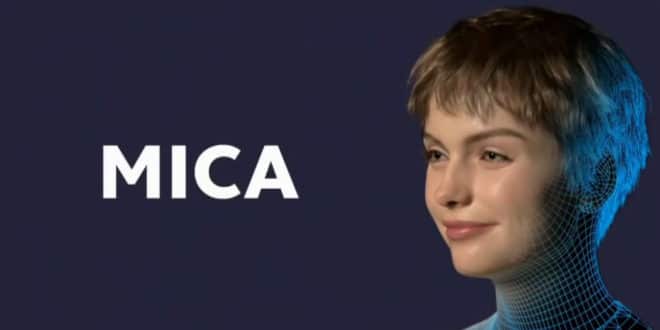That wasn’t the main theme of the Magic Leap keynote last week. But Mica, the company’s artificial intelligence, really deserves attention.
With “Mica”, the augmented reality company Magic Leap has introduced the next evolution of virtual assistants. In contrast to Cortana, Alexa or Siri with their disembodied voices, Mica has an incredibly real avatar. She yawns, makes eye contact and interacts with the wearer using Magic Leap’s augmented reality glasses.
At the time of Alexa, Siri or Cortana we are used to having ubiquitous but disembodied vocal assistants. This is where Mica comes in, the version of artificial intelligence humanized by Magic Leap. Of course, you have to wear the equipment to see it (yes, Magic Leap speaks of it as “she”). The website “Upload VR” could go beyond the simple presentation and our colleagues could create a real report about this surprising meeting. What is most surprising about this humanized artificial intelligence? Facial expressions!
Mica has many similar features to Cortana, Siri or Alexa
According to Magic Leap Vice President John Monos, Mica is about seeing how systems can be “represented in human forms. Based on the demonstration they showed at #LeapCon last week, it looks like they did a good job.
Mica is still in the prototype phase. As far as we know, there are still some technical obstacles that the company is trying to overcome. These include implementing interactions and taking intelligence to “another level, at least what people expect”.
What is Magic Leap’s plan for mica?
It is an interface designed to trigger reactions. The test performed by the website allows the Mica to interact with elements of the set and the user himself. Sitting in front of it and watching it look at us would be a particularly enjoyable experience. We will have to wait and see what its concrete benefits will be for Magic Leap One users. An important step in moving from a simple, well-made gadget phase to a useful consumer accessory that has been widely adopted.
Mica is just the beginning and is not meant to replace all other digital assistants. Instead, the company hopes and encourages others to progress so they can see the work they’ve done with Mica. “We will create a new world,” Monkeys said.
An augmented reality assistant with very real features has many applications. It’ not only for everyday use but also for medical use. For example, you can use Augmented Reality to allow the elderly to simulate human contact and therapy.
